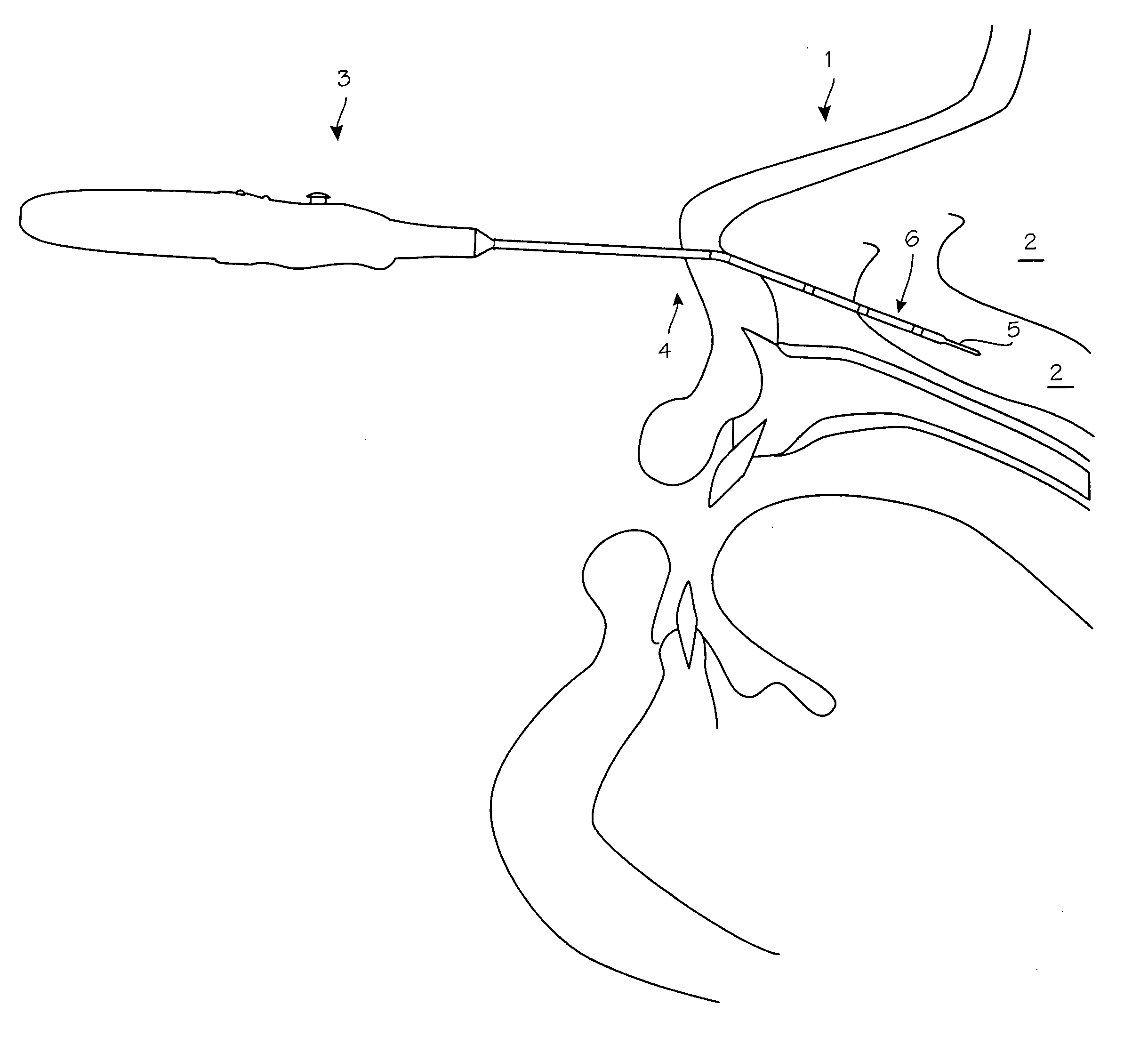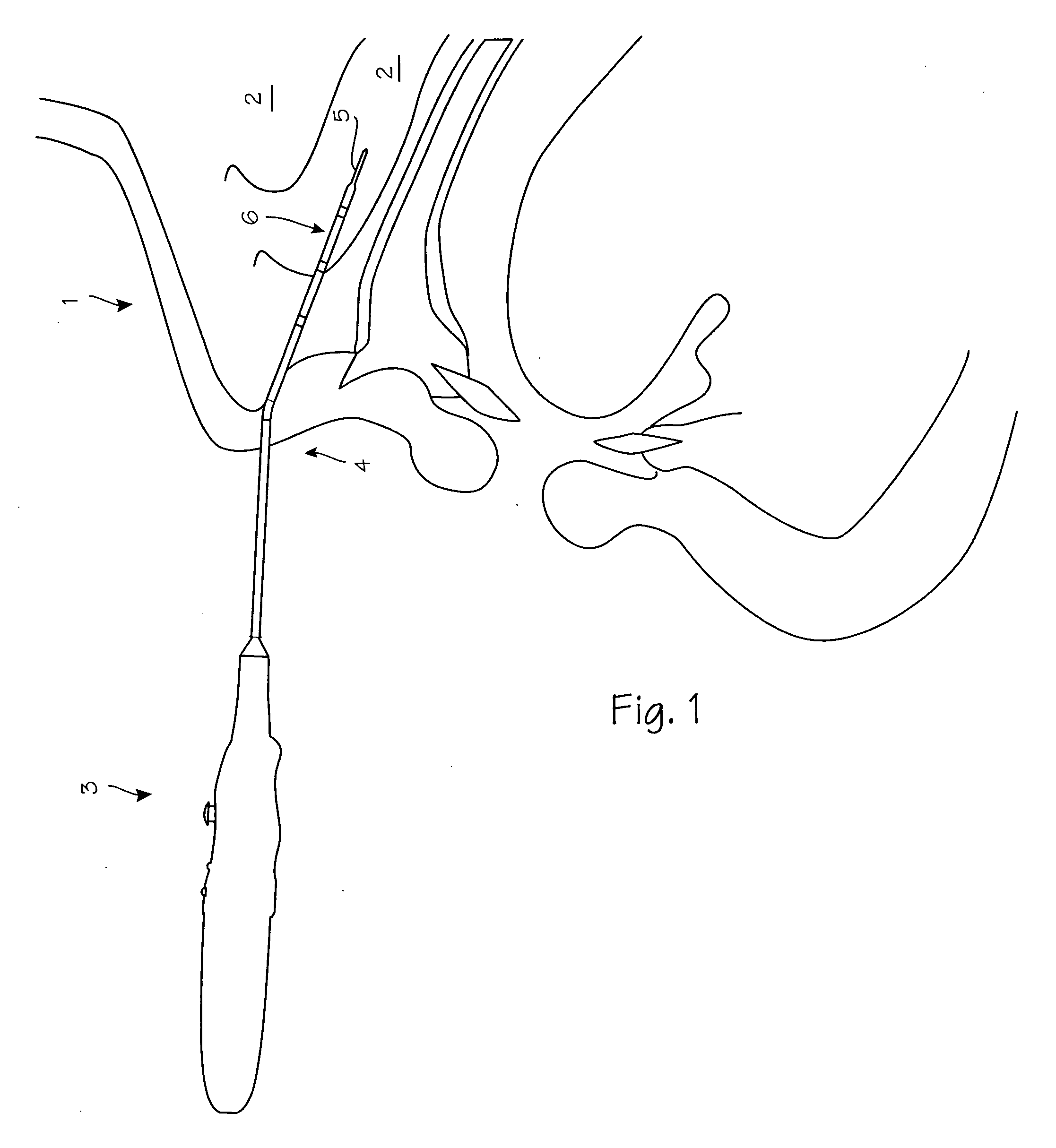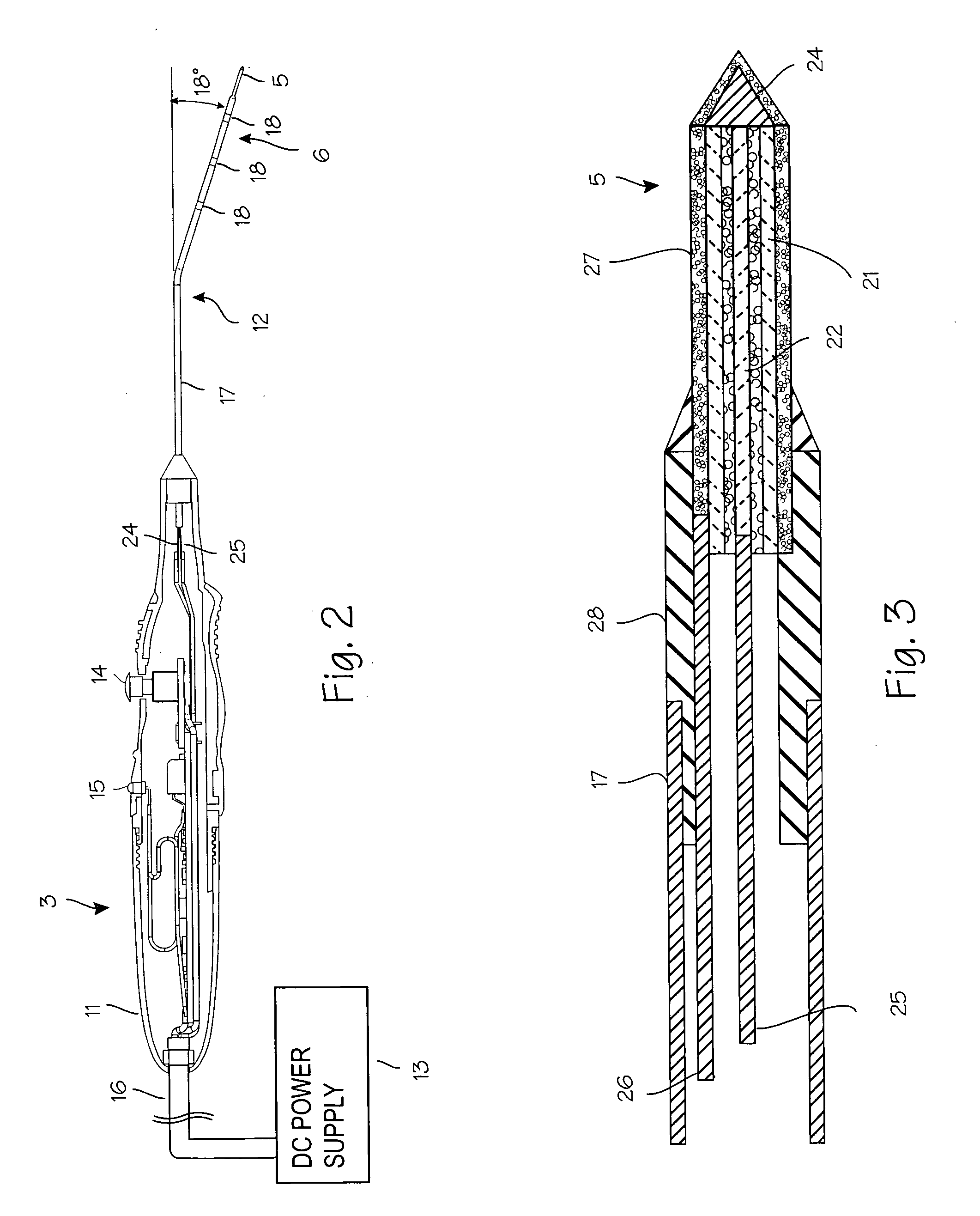Resistive heating device and method for turbinate ablation
- Summary
- Abstract
- Description
- Claims
- Application Information
AI Technical Summary
Benefits of technology
Problems solved by technology
Method used
Image
Examples
Embodiment Construction
[0009]FIG. 1 illustrates a typical turbinate ablation procedure in a patient 1 with enlarged turbinates 2. To accomplish the thermal turbinate ablation, a surgeon inserts the distal end of the ablation probe 3 through the nostril 4 and into the sinus cavity to reach the turbinates. The surgeon pushes the heating segment 5 mounted on the distal tip 6 into the turbinates, and advances the distal tip into the submucosal tissue, advancing posteriorly along the turbinate and within the mucosal tissue as far as desired. When satisfied with the placement of the probe tip, the surgeon will initiate heating of the heating segment at the distal end of the probe, repeating as necessary to ablate the turbinates to the extent indicated by the conditions observed by the surgeon. The device is designed to provide heating for a predetermined time period, through such means as a timing circuit, computer control system or embedded microprocessor, where the time period is predetermined by the paramete...
PUM
 Login to View More
Login to View More Abstract
Description
Claims
Application Information
 Login to View More
Login to View More - Generate Ideas
- Intellectual Property
- Life Sciences
- Materials
- Tech Scout
- Unparalleled Data Quality
- Higher Quality Content
- 60% Fewer Hallucinations
Browse by: Latest US Patents, China's latest patents, Technical Efficacy Thesaurus, Application Domain, Technology Topic, Popular Technical Reports.
© 2025 PatSnap. All rights reserved.Legal|Privacy policy|Modern Slavery Act Transparency Statement|Sitemap|About US| Contact US: help@patsnap.com



